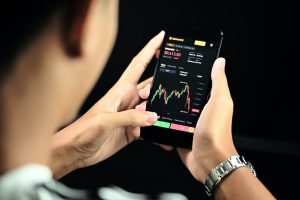The Basics of Margin Trading Forex: A Beginner’s Guide
Forex trading, or foreign exchange trading, is the buying and selling of currencies in the global market. It is the largest and most liquid market in the world, with trillions of dollars being traded on a daily basis. Margin trading is an essential aspect of forex trading, allowing traders to amplify their potential profits through leverage. In this beginner’s guide, we will explore the basics of margin trading forex, including what it is, how it works, and the risks involved.
What is Margin Trading?
Margin trading in forex refers to the practice of borrowing funds from a broker to trade larger positions than what a trader’s account balance can support. It is essentially trading with borrowed money, also known as leverage. The borrowed funds act as a margin, which allows traders to control larger positions in the market.
How Does Margin Trading Work?
When a trader decides to engage in margin trading, they are required to open a margin account with a forex broker. The broker will then provide a leverage ratio, which determines the amount of borrowed funds a trader can access. For example, if the leverage ratio is 1:100, a trader can control a position that is 100 times the size of their account balance.
To illustrate, let’s say a trader has $1,000 in their margin account and wants to trade with a leverage ratio of 1:100. With this leverage, they can control a position worth $100,000 ($1,000 x 100). The trader only needs to put up a fraction of the total value of the trade, known as the margin requirement, as collateral. The remaining funds are provided by the broker.
The margin requirement is usually expressed as a percentage, known as the margin level. For example, if the margin requirement is 2%, the trader needs to have $2,000 in their account to open the $100,000 position. The remaining $98,000 is borrowed from the broker.
Profit and Loss in Margin Trading
The potential for profit in margin trading is increased due to the ability to control larger positions. For example, if the trader’s $100,000 position increases in value by 1%, their profit would be $1,000. However, it is important to note that losses are also amplified in the same way. If the position decreases in value by 1%, the trader would lose $1,000.
It is crucial for traders to manage their risk effectively when engaging in margin trading. Margin calls are a common occurrence in forex trading and happen when the trader’s account balance falls below the required margin level. When this happens, the broker may issue a margin call, requesting the trader to deposit additional funds to meet the margin requirement or close out some of their positions.
Understanding the Risks
Margin trading can be highly profitable, but it also comes with inherent risks. The amplified leverage can lead to significant losses if trades move against the trader’s position. It is crucial for beginners to understand the risks involved and develop a solid risk management strategy.
One key aspect of risk management is setting a stop-loss order. A stop-loss order is a predetermined price level at which a trader will exit their position to limit potential losses. By setting a stop-loss order, traders can protect themselves from excessive losses and ensure they are not caught in a market downturn.
Conclusion
Margin trading in forex allows traders to control larger positions with borrowed funds, amplifying potential profits. However, it is crucial for beginners to understand the risks involved and develop a solid risk management strategy. By setting stop-loss orders and managing leverage effectively, traders can navigate the world of margin trading forex with confidence.





